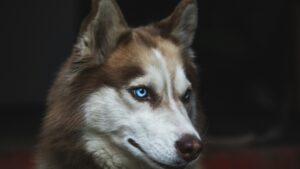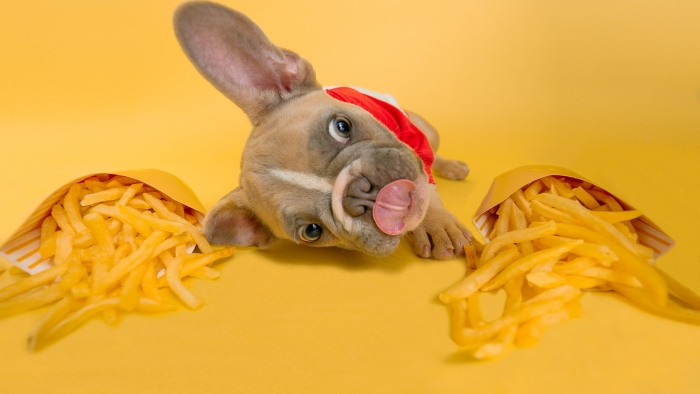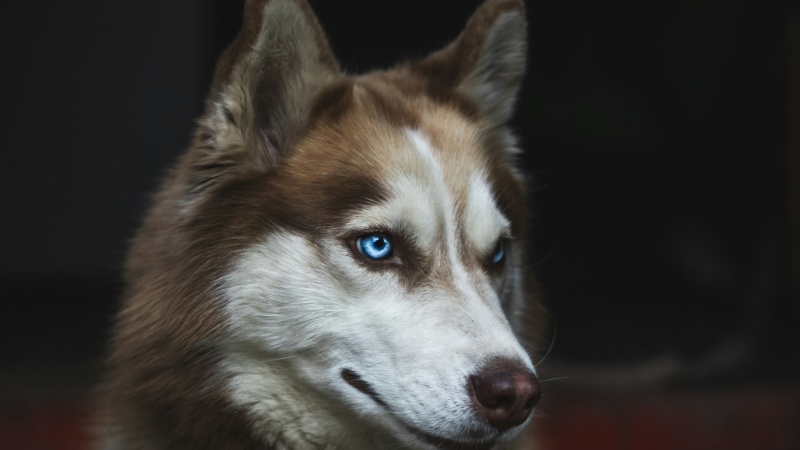
Best Doggie Doorbell:15+ Models Tested for Potty Training
Are you training your doggie doorbell manners, or does your furry friend incessantly scratch or bark at the door to go outside? You need a

When you notice your dog not eating but drinking water, it can be as concerning and confusing as deciphering a cat’s scream. This behavior might signal something significant about your furry friend’s health.

In this blog, we’ll explore the various reasons and risks associated with this unusual behavior.
Let’s dive into the world of canine health and understand what’s going on when your dog turns away from their food but heads straight for the water bowl.
Understanding why your dog might be refusing food, but still drinking water is crucial in addressing any underlying issues.
Sometimes the reason your dog is not eating but drinking water could be as simple as dental pain or other oral health issues. Dogs with sore gums or a toothache may find it painful to eat.
This discomfort can deter them from their usual eating habits, leading them to avoid solid foods while still maintaining hydration. Regular dental check-ups are important to prevent and address these issues early.
If your dog suddenly stops eating but continues to drink water, examining their mouth for any signs of dental problems is a good first step.
Just like humans, dogs can lose their appetite due to stress or anxiety. Changes in their environment or routine can lead to your dog not eating but still drinking water.
This behavior can be triggered by various stressors such as moving to a new home, the addition of a new family member, or even changes in the household dynamics.
It’s important to observe any potential sources of stress and provide a comforting and stable environment for your dog. Consider engaging in calming activities with your dog, like gentle play or quiet time together, to help alleviate their anxiety.
Senior dogs, particularly those experiencing a phase of ‘senior dog not eating but drinking water,’ might exhibit decreased appetite due to age-related health changes.

As dogs age, their metabolic rate can slow down, and their sense of smell and taste may diminish, making food less appealing.
It’s crucial to adapt their diet to these changes, perhaps with more palatable or softer food options, and ensure regular veterinary check-ups to monitor their overall health and address any age-related issues promptly.
Various illnesses, including digestive disorders, and liver, and kidney diseases, can lead to a decrease in appetite. Additionally, certain medications might cause a dog to lose interest in food.
A range of health issues, from minor ailments to more serious conditions, could be responsible for a dog not eating but drinking water. In these cases, it is crucial to seek veterinary advice for a proper diagnosis and treatment plan.
Medications for other conditions can also affect a dog’s appetite, either as a direct side effect or by causing nausea or discomfort.
While food might not be appealing, maintaining hydration is key for your dog’s health.
Even when not eating, drinking water is vital for your dog’s health, helping to keep their organs functioning properly.
Water plays a critical role in various bodily functions, including digestion, blood circulation, and waste elimination.

When a dog is not eating but still drinking water, it’s important to ensure they have constant access to clean, fresh water.
Monitoring their water intake can also provide insights into their overall health and alert you to any changes that may need veterinary attention.
Both excessive and insufficient water intake can be signs of health issues, making it important to monitor how much your dog is drinking.
An increase in water consumption can indicate conditions such as diabetes or kidney disease, while decreased water intake can lead to dehydration, especially if the dog is also not eating.
Keeping a close eye on how much water your dog drinks daily can help you notice any significant changes that warrant a visit to the vet.
Not eating can lead to several health risks, making it crucial to understand the potential consequences.
Prolonged refusal to eat can lead to malnutrition, impacting your dog’s overall health and well-being. Malnutrition can weaken the immune system, reduce muscle strength, and lead to a host of other health issues.
It’s important to address the root cause of the loss of appetite to prevent these serious consequences. If a dog is not eating but drinking water, providing a balanced diet and consulting a veterinarian for nutritional advice is essential.
Despite drinking water, not eating can still lead to dehydration and related complications over time.
Even if a dog drinks water, they might still be at risk of dehydration if they’re not consuming enough fluids to compensate for the lack of moisture in food, especially in dogs that are normally on a wet food diet.
Signs of dehydration include dry gums, lethargy, and sunken eyes. If you suspect your dog is dehydrated, it’s important to seek veterinary care immediately.
Recognizing when professional intervention is needed is key to your dog’s health.
Knowing when to take your dog to the vet is crucial, especially if they persist in not eating but drinking water.
If your dog hasn’t eaten for more than 24 hours, it’s important to consult a veterinarian.
Other signs that require immediate attention include vomiting, diarrhea, lethargy, or any other unusual behavior.
A prompt veterinary consultation can help diagnose the issue and start appropriate treatment.
Veterinarians can conduct examinations and tests to determine the cause of your dog’s changed eating habits. These may include blood tests, urinalysis, X-rays, or ultrasound, depending on the suspected cause.
A thorough veterinary examination can identify anything from dental issues to serious health conditions. Early diagnosis and treatment are crucial for the best outcome.
There are products that can help manage and monitor your dog’s eating and drinking habits.
A dog doorbell can be an excellent tool for your pet to communicate their needs, including hunger and thirst.
This simple device can be trained to help your dog alert you when they need to go outside for a bathroom break or when they’re feeling hungry or thirsty.
It’s a useful aid in understanding and responding to your dog’s needs, especially if they’re experiencing changes in their eating or drinking habits.
For dogs with irregular appetites, automatic feeders can ensure they receive the right amount of food at regular intervals.
These devices can be particularly helpful if your dog tends to eat smaller amounts throughout the day or if you’re managing a busy schedule.
Some automatic feeders also allow you to record a message to call your dog for meal times, making the feeding experience more engaging.
Smart bowls can track your dog’s eating and drinking habits, helping to quickly identify any concerning changes.
These bowls can measure the amount of food and water consumed and monitor the frequency of eating and drinking.
This data can be invaluable in detecting early signs of health issues and ensuring your dog maintains a balanced diet and hydration.
In conclusion, a dog not eating but drinking water is a behavior that warrants attention and understanding.
From dental issues to stress and age-related factors, various reasons could be behind this behavior. It’s crucial to maintain their hydration, monitor their overall health, and seek veterinary guidance when necessary.
Remember, keeping an eye on your dog’s eating and drinking habits, and using supportive tools like a dog doorbell or smart bowls, can play a significant role in ensuring their health and happiness.
Q1: What should I do if my dog is not eating but seems otherwise healthy?
A1: If your dog is not eating but appears to be in good health otherwise, monitor their behavior for a day or two. Sometimes dogs may have temporary loss of appetite due to mild stomach upset. If the issue persists, consult your veterinarian for a check-up.
Q2: Can dental problems cause a dog to stop eating but continue drinking water?
A2: Yes, dental issues like gum disease or a broken tooth can make eating painful for dogs, leading to a loss of appetite. Regular dental check-ups are essential to address these problems early.
Q3: Is it normal for a dog to lose interest in food as they age, even if they’re healthy?
A3: Yes, some senior dogs may experience a decreased appetite due to age-related factors. However, it’s essential to rule out any underlying health issues. Consult your vet for advice on adjusting their diet.
Q4: What are some signs of dehydration in dogs, and how can I prevent it?
A4: Signs of dehydration include dry gums, lethargy, and sunken eyes. To prevent dehydration, ensure your dog has constant access to clean, fresh water. If you suspect dehydration, seek immediate veterinary care.
Q5: Can stress alone cause a dog to stop eating but drink water normally?
A5: Yes, stress and anxiety can affect a dog’s appetite. Changes in their environment, routine, or other stressors can lead to a decreased appetite. Providing a comforting and stable environment can help alleviate stress-related eating issues.


Are you training your doggie doorbell manners, or does your furry friend incessantly scratch or bark at the door to go outside? You need a

When it comes to dog pee, much like humans, the urine of animals is a vital health indicator. Just as human urine reveals a lot

Noticed your dog yawn more often than usual? While it’s adorable, it could also be a sign of something to consider if it appears excessive.

Wondering what’s so fantastic about bell train a dog? Picture a world where your furry friend always alerts you when they need to go outside,

Are you training your doggie doorbell manners, or does your furry friend incessantly scratch or bark at the door to go outside? You need a

When it comes to dog pee, much like humans, the urine of animals is a vital health indicator. Just as human urine reveals a lot

Noticed your dog yawn more often than usual? While it’s adorable, it could also be a sign of something to consider if it appears excessive.

Wondering what’s so fantastic about bell train a dog? Picture a world where your furry friend always alerts you when they need to go outside,
Copyright © 2024 doggydogdoorbell. All Rights Reserved.